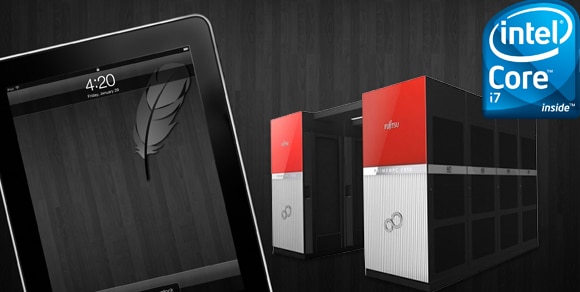
In the world of supercomputers – imagine computers the size of a warehouse – everything is about getting as many flops (floating-point operations per second) as possible. Think of this as how many calculations the computer can perform in a second.
Currently the fastest supercomputer in the world, as ranked by the Top500 list, is the K Computer built by Fujitsu in Japan. It has almost 90,000 SPARC64 VIIIfx processors with over 640,000 cores capable of more than 10.51 petaflops (10,510,000,000,000,000 flops).
We have written about supercomputers many times before here at Royal Pingdom but we figured we’d take a slightly different approach this time. Since most of us don’t work with supercomputers and will probably never even come in direct contact with one we wanted to give you a simple frame of reference to understand how incredibly powerful they are.
It turns out it’s much harder than we thought since the numbers are so big.
How fast is 10.51 petaflops?
One of the latest processors that some of you run in your PCs, the Intel Core i7 980 XE, is capable of 109 gigaflops. If we change the flops to the same base, 10.51 petaflops is 10,510,000 gigaflops.
The number of zeros is mind boggling and we really work hard at keeping it all straight.
Many of you have Apple’s latest iPad 2, which has a powerful A5 processor inside. It’s dual-core and runs at 1GHz clock speed. The A5 processor reaches 170.9 megaflops. It’s more than enough to run most iPad apps and games but as you can see it trails behind both the Intel processor and the K Computer. Here’s the comparison:
| A5 processor in iPad 2 | 171 megaflops |
| Intel Core i7 980 EX | 109,000 megaflops |
| K Computer | 10,510,000,000 megaflops |
These are still numbers large enough that most of us can’t really fathom them but to answer our own question we would need 61,461,988 (61 million!) iPad 2s to match the processing prowess of the K Computer.
That makes a pile of iPad 2 units about 540 km high. That’s the equivalent of almost 1,700 Eiffel Towers or around 650 Burj Khalifa, stacked on top of each other.
That’s a lot of iPads!
For another exciting look at supercomputers, check out Peer1’s infographic.


























